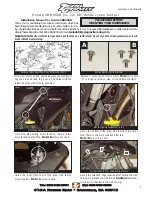
Technical Manual
Airbridge BTS3612A CDMA Base Station
System Principle
Appendix D Electromagnetic Radiation
D-5
D.5.2 Guidelines on Arranging Antenna Locations
Observe the following guidelines when selecting the places for BTS antennas:
z
For roof-mounted antennas, elevate the transmitting antennas above the height of
people who may have to be on the roof.
z
For roof-mounted antennas, keep the transmitting antennas away from the areas
where people are most likely to be (e.g., roof access points, telephone service
points, HVAC equipment).
z
For roof-mounted directional antennas, place the antennas near the periphery and
point them away from the building.
z
Consider the trade off between large aperture antennas (lower maximum RF) and
small aperture antennas (lower visual impact).
z
Take special precautions to keep higher-power antennas away from accessible
areas.
z
Keep antennas at a site as for apart as possible; although this may run contrary to
local zoning requirements.
z
Take special precautions when designing "co-location" sites, where multiple
antennas owned by different companies are on the same structure. This applies
particularly to sites that include high-power broadcast (FM/TV) antennas. Local
zoning often favors co-location, but co-location can provide "challenging" RF
safety problems.
z
For roof-mounted antennas, elevate the transmitting antennas above the height of
people who may have to be on the roof.
z
For roof-mounted antennas, keep the transmitting antennas away from the areas
where people are most likely to be (e.g., roof access points, telephone service
points, HVAC equipment).
z
Take special precautions for antenna sites near hospital and schools.









































